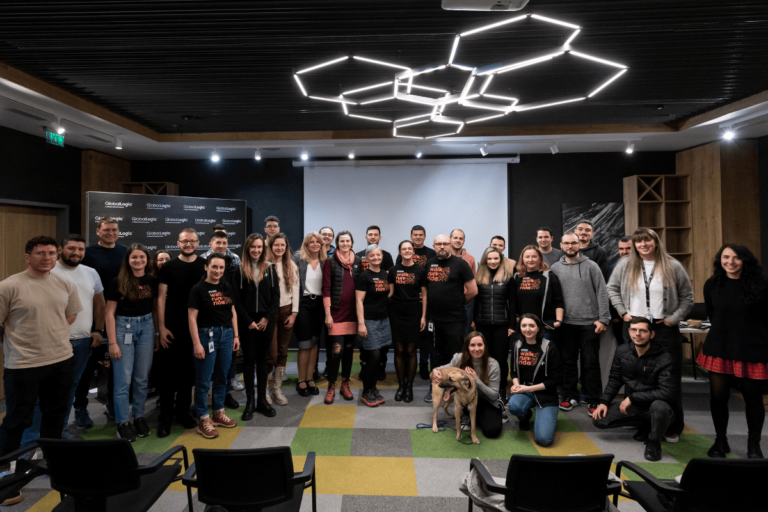- Services
Technology Capabilities
Technology Capabilities- Product Strategy & Experience DesignDefine software-driven value chains, create purposeful interactions, and develop new segments and offerings
- Digital Business TransformationAdvance your digital transformation journey.
- Intelligence EngineeringCreate high-value products faster with AI-powered and human-driven
- Software Product EngineeringCreate high-value products faster with AI-powered and human-driven engineering.
- Technology ModernizationTackle technology modernization with approaches that reduce risk and maximize impact.
- Embedded Engineering & IT/OT TransformationDevelop embedded software and hardware. Build IoT and IT/OT solutions.
- Industries
- GlobalLogic VelocityAI
- Insights
White PapersSeptember 17, 2024Diana SocaciuElevating Romanian Tourism with GlobalLogic: Apuseni App
The innovative banking apps, such as the one we'll explore in this case study, succeed ...
 Case StudiesGlobalLogic
Case StudiesGlobalLogicFrom Legacy to Leading-edge: A Global Software Leader’s ...
Discover how GlobalLogic’s AI-powered solutions helped a global software leader migrate...

- About
Published on May 22, 2025What the ChatGPT 4.0 Incident Tells Us About Building with Generative AI
View all articles Yuriy YuzifovichChief Technology Officer, AIShareRelated Content
Yuriy YuzifovichChief Technology Officer, AIShareRelated Content GlobalLogic1 December 2025
GlobalLogic1 December 2025 GlobalLogic27 November 2025View All Insights
GlobalLogic27 November 2025View All Insights GlobalLogic19 November 2025Recommended authorsDirector, Industrial BU GSPSenior Vice President & Head of EMEAView all authorsVice President & Consumer Business, Americas GlobalLogic
GlobalLogic19 November 2025Recommended authorsDirector, Industrial BU GSPSenior Vice President & Head of EMEAView all authorsVice President & Consumer Business, Americas GlobalLogicLet's start engineering impact together
GlobalLogic provides unique experience and expertise at the intersection of data, design, and engineering.
Get in touchAI GovernanceAI-Powered SDLCGenAICross-IndustryWhat the ChatGPT 4.0 Incident Tells Us About Building with Generative AI
Something strange happened recently: developers, researchers, and power users all started reporting that ChatGPT 4.0 was acting… different. It seemed slower in some cases, less accurate in others. People began wondering if the model had been quietly downgraded. OpenAI eventually responded, saying no, the model hadn’t changed — but the behavior had.
Whatever the truth is, one thing is clear: even the most advanced LLMs can behave in unexpected ways. And when you’re building serious applications on top of them, that unpredictability matters.
Generative AI Is Powerful — And Unstable by Design
There’s a tendency to treat these models like stable APIs. Call the endpoint, get the result. But the reality is very different.
LLMs are evolving fast. Providers are iterating behind the scenes. What works this week might subtly (or not so subtly) shift next week. That’s not a failure of quality. It’s a reflection of how early we still are in this technology.
But for organizations deploying generative AI-based agents in production settings, it creates a real tension: how do you build reliable systems on top of something inherently unpredictable?
This Is Why Guardrails Matter
Whether you’re building internal tools, customer-facing experiences, or domain-specific agents, you’re not just prompting a model; you’re designing a system. And that system needs boundaries.
- What happens when the model hallucinates a confident but wrong answer?
- What if its tone drifts out of alignment with your brand?
- What if its performance drops after an update, and no one notices for days?
These aren’t hypothetical. They’re the kinds of things enterprise teams are encountering right now. And they don’t get solved with better prompts or clever retries. They get solved with guardrails; with intentional constraints that monitor, filter, and respond to the model’s behavior in real time.
It’s not surprising that some companies have started building platform-level capabilities for this. This is exactly what GlobalLogic has designed Platform of Platforms to do: combine robust guardrails, observability, and fallback logic into one generative AI platform, so teams can build with confidence even when the underlying model shifts underneath them.
Recommended reading – The Future of Agentic AI: Designing Reliable Systems for Enterprise Success
It’s Time to Build for the Long Game
The companies doing this well — the ones who are successfully integrating generative AI into their operations — aren’t the ones who expect the model to always behave. They’re the ones who plan for when it doesn’t.
They invest in observability. They wrap LLMs in monitoring and fallback logic. They define what “acceptable output” looks like for their context. And they design their systems to degrade gracefully, not catastrophically.
These companies aren’t cautious because they distrust the technology. They’re cautious because they understand what’s at stake: customers, compliance, reputation, risk.
Final Thought
The ChatGPT 4.0 situation wasn’t a failure; it was a reminder. These models are remarkable. But they’re also volatile. If you’re building anything that matters on top of them, don’t just hope for stability. Design for unpredictability.
And if you’re just now thinking about how to make your LLM applications resilient to change, this is the right time to start the conversation.
 How can I help you?
How can I help you?
Hi there — how can I assist you today?
Explore our services, industries, career opportunities, and more.
Powered by Gemini. GenAI responses may be inaccurate—please verify. By using this chat, you agree to GlobalLogic's Terms of Service and Privacy Policy.


